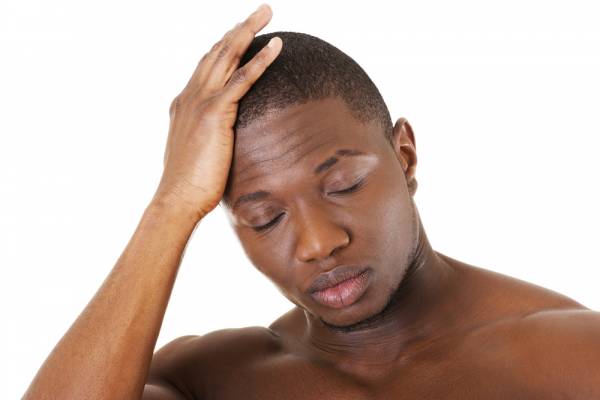As athletes and coaches, we tend to view pain through the lens we’re most familiar with – body mechanics. While position and movement patterns are important, they are only one aspect of the multifaceted problem that pain presents. In order to understand the larger picture, we need to look deeper.
In addition to structural and mechanical issues, there are psychosocial elements that contribute to pain. An overwhelming amount of evidence shows pain does not come simply from our habitual mechanics. Our mental habits and prevailing attitudes can cause just as many problems.
RELATED: Facing the Pain: Making the Physical Mental and the Mental Physical
In this article I’m going to address some common psychosocial components that can contribute to increased pain perception. I’ll also explain the steps you can take to move beyond this problem and return to a pain-free life.
When Pain Isn’t Mechanical
Movement starts in the mind. Whatever it is you’re going to do starts with thinking about how to do it and how it’s going to look and feel. Many of us have experienced the benefits of mental techniques such as visualization and positive attitude. Unfortunately, it works both ways. Believing you’re going to crush your personal record can help you. But believing that next box jump is going to be painful can also make it so.
Fitness and movement professionals tend to first look for mechanical dysfunctions to identify potential sources of pain. Despite the acknowledgement that pain is often more complex, I still believe identifying mechanical issues is a good start.
“Believing you’re going to crush your personal record can help you. But believing that next box jump is going to be painful can also make it so.”
It’s about simplicity. If the pain in question only happens during a particular movement, can be easily replicated by reproducing the position, and easily remedied with a combination of cuing and manual modalities that lead to better movement, I think it would be a bit odd to assume the problem wasn’t mechanical.
But where it gets weird is when the pain doesn’t seem to have a direct structural basis. As I see it, this type of pain can be subdivided into two categories:
1. Pain That Originated Structurally, But Remained
This type of pain is often blamed on things like residual inflammation and scar tissue formation. Sometimes it may be that simple. Often it’s a bit more complex.
There’s a growing school of thought that much of residual pain can be attributed to some type of protective mechanism that is a combination of actual physical sensation in conjunction with certain psychological states. It can be hard to pin down this type of pain because while there are several common culprits, psychosocial pain is unique to each individual.
RELATED: How to Return to Training After a Low Back Injury
If you’ve ever been seriously injured, you were likely a bit nervous about going back to the activity that caused your injury. This anxiety may very well cause you to perform the movement in question poorly, thus aggravating or recreating the injury.
In addition to this, it’s also possible that the tissues themselves have developed a type of proprioceptive-hypersensitivity. Your tissues “remember” that the last time they were in this position, things went badly. They try to prevent you from going there again by causing you pain. This type of guarding is a common issue where certain muscles tense to maintain positions of protection. Fear of re-injury or pain can increase guarding and further complicate the problem.

2. Pain That Can’t Be Attributed to a Specific Physical Structure
Lower back pain (LBP) is a common example of this. Many practitioners attribute LBP to things like postural imbalances, bulging discs, and poor core stability because, anatomically speaking, it makes sense. Unfortunately, there’s a wealth of evidence demonstrating that while those things can all contribute, none of them reliably predict the likelihood of developing back pain in pain-free individuals. There are also people who have lower back pain despite having good posture and healthy vertebrae. So what gives?
RELATED: Myths About Disc Bulges: They Are Not Forever – But Training Is
Some studies have identified that psychological factors such as job satisfaction and depression are better predictors of back pain than structural markers. Other factors such as insomnia and anxiety are also common in individuals with back pain. On the whole, the presence of these variables seems to present much more reliable predictions of developing chronic LBP than structural factors.
A Multifaceted Approach to Pain
While LBP is one of the most common psychosocial-pain hotspots, I’ve also seen a many individuals with neck and jaw pain that seemed to be predominantly psychological. Simply put, just increasing strength and range of motion doesn’t always solve the pain problem.
“There are even some studies that suggest people persist in feeling pain because of the attention they receive.”
There are even some studies that suggest people persist in feeling pain because of the attention they receive. To be clear, the studies don’t suggest people are faking the pain to get attention, but that they are continuing to feel it because they are receiving a psychological reward for doing so. Where to draw the line between actual physical pain and perceived pain is yet another issue complicating matters.
If improving strength, increasing mobility, and resolving physical issues aren’t the solution, then what is? As usual, a multifaceted problem requires a multifaceted approach whether you are a coach of an athlete in pain or you are the person in pain yourself.
1. Understand Exercise-Induced Pain vs. Chronic Pain
Chronic pain is typically defined as pain that persists for more than six months. One of the larger mistakes I see professionals make is applying the principals behind chronic pain to the treatment of sports injuries and vice versa.
RELATED: 4 Things You Don’t Know You’re Doing That Sabotage Your Performance
It’s entirely possible that your chronic LBP isn’t caused by poor posture. It’s also entirely possible that your intermittent back pain is the direct result of your poor posture and dysfunctional movement patterns. Most of the studies I’ve seen that demonstrate no link between posture and pain were not done with an active, strength-training population. A qualified clinician should be able to determine the difference with a handful of interventions and test/retests.

2. Educate Yourself and Your Clients
Educating your athletes, your patients, or yourself is integral in overcoming training anxiety. We fear what we don’t know and can’t understand. If you are a coach or practitioner, don’t just give your athletes corrective exercises. Help your clients understand what was causing the pain and what effect your intervention will have.
“One of the best ways to overcome fear is through teaching. Show your athletes there’s nothing to be afraid of.”
Simply being told you should be feeling less pain can have a substantial psychological benefit. Empower your athletes to understand and regain mastery of their bodies. Take them through the movements they are afraid of and show them they can be done without being hurt. One of the best ways to overcome fear is through teaching. Show your athletes there’s nothing to be afraid of.
3. Examine the Context of the Pain
Is the fear, anxiety, or loss of motivation directly related to exercise? Or is it a prevailing aspect of the athlete’s personality?
RELATED: How to Use EFT to Overcome Challenges in the Gym
If an otherwise calm, collected individual has had his or her confidence dashed by an injury, then that’s one thing. If the athlete is also frequently tired and complains of other issues such as anxiety or a general lack of motivation, then the problem may be larger than his or her fitness.
You need to be able to spot the signs of anxiety and depressive disorders and how to approach the problems responsibly and compassionately. If you are the one suffering from chronic pain, consider this for yourself, as well.
4. Know When to Get Help
Regardless of its location, if your pain is excruciating or persists for longer than a week with zero decrease, then it’s time to seek the help of a qualified medical professional. Your first stop should always be your primary care provider to rule out anything severe or life threatening.
If you or your athlete is afflicted with some type of depression or anxiety, there are a variety of effective treatment options. Cognitive behavioral therapy in particular has shown some promise as a non-pharmaceutical intervention to improve psychosocial pain disorders.

The First Step to Solving Pain
Regardless of the cause, pain is your body’s emergency alert system. It means there’s a problem that needs to be addressed.
It can take some courage to admit the issue might be in your mind. As someone who has struggled with depression and pain throughout my life, I can tell you that help is out there. The hardest part is taking the first step.
Photos courtesy of Shutterstock.






